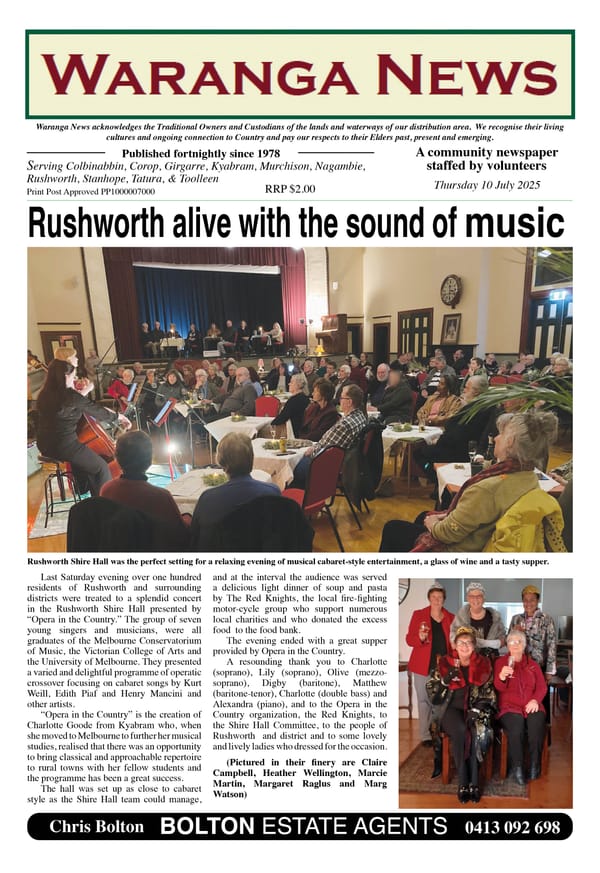29. Aboriginal spirituality

Closely linked to the systems of kinship that were briefly discussed in the previous Waranga Dreaming story are the advanced notions of spirituality that were evident in the lives of Aboriginal people of this area prior to European colonisation. Compared to some of the major religions of today, Aboriginal spirituality had evolved over tens of thousands of years, with local variations.
“Aboriginal spirituality is defined at the core of Aboriginal being, their very identity. It gives meaning to all aspects of life including relationships with one another and the environment. All objects are living and share the same soul and spirit as Aboriginals. There is a kinship with the environment. Aboriginal spirituality can be expressed visually, musically and ceremonially.” (Grant, 2004)
Sadly, we know very little about the highly developed spirituality of the Aboriginal people in this area, and the depth of its meaning to their lives. Along with many other things, there was massive disruption to this aspect of their lives from the late 1830s.
BASIC TENETS
It is possible, however, to generalise about some of the basic tenets of Aboriginal spirituality, and reflect on how they may have guided the lives of Aboriginal people in this area. One aspect of this spirituality that we can all relate to is the concept of animism i.e. “a world where everything is interconnected, people, plants and animals, landforms and celestial bodies are part of a larger reality…nothing is inanimate, everything is alive…all are energised by a spirit. As such, humans are on an equal footing with nature, are part of nature and are morally obligated to treat animals, plants and landforms with respect.”
We are by now familiar with the Aboriginal view of the Dreaming – the time of creation – just as similar stories exist in most major religions of today. As noted in the previous story, Bunjil (the Wedge-tailed Eagle) was seen as the creator figure for the Ngurai-illum Wurrung people.
The role of totems, briefly described in the previous story, was also an important part of the whole concept of Aboriginal spirituality.
MORE THAN CREATION
In local Aboriginal communities, the creation ancestor (Bunjil) was also seen to have stipulated “what people had to do to maintain their part of this interdependence” i.e. the rules by which all things were to live harmoniously and sustainably. The laws ensure “that each person knows his or her connectedness and responsibilities for other people, for country….and (for) the ancestor spirits.”
In practice, the basic laws had probably existed since time immemorial, subject to regular revision over time until the result was a very practical and workable set of rules. These rules were then handed down by elders in an oral tradition over hundreds of generations.
CLARITY
One of the things that emerges from this discussion is that Aboriginal people’s lives were very clearly ordered by tens of thousands of years of a system that was handed down orally, and understood by successive generations. People knew where they stood, and what was expected of them. There was enormous comfort for people in having a very clear structure by which to live their lives.
Because of the inextricable link between Aboriginal people and their country, one can only wonder at the devastation caused by the disconnection from country in the period from 1836 – especially the first couple of decades of European colonisation extending into the 1850s.
Part of the healing process that people can go through is to try to reconnect with country. There are plenty of encouraging examples in our local communities where this is happening.
Reference: australianstogether.org.au website




